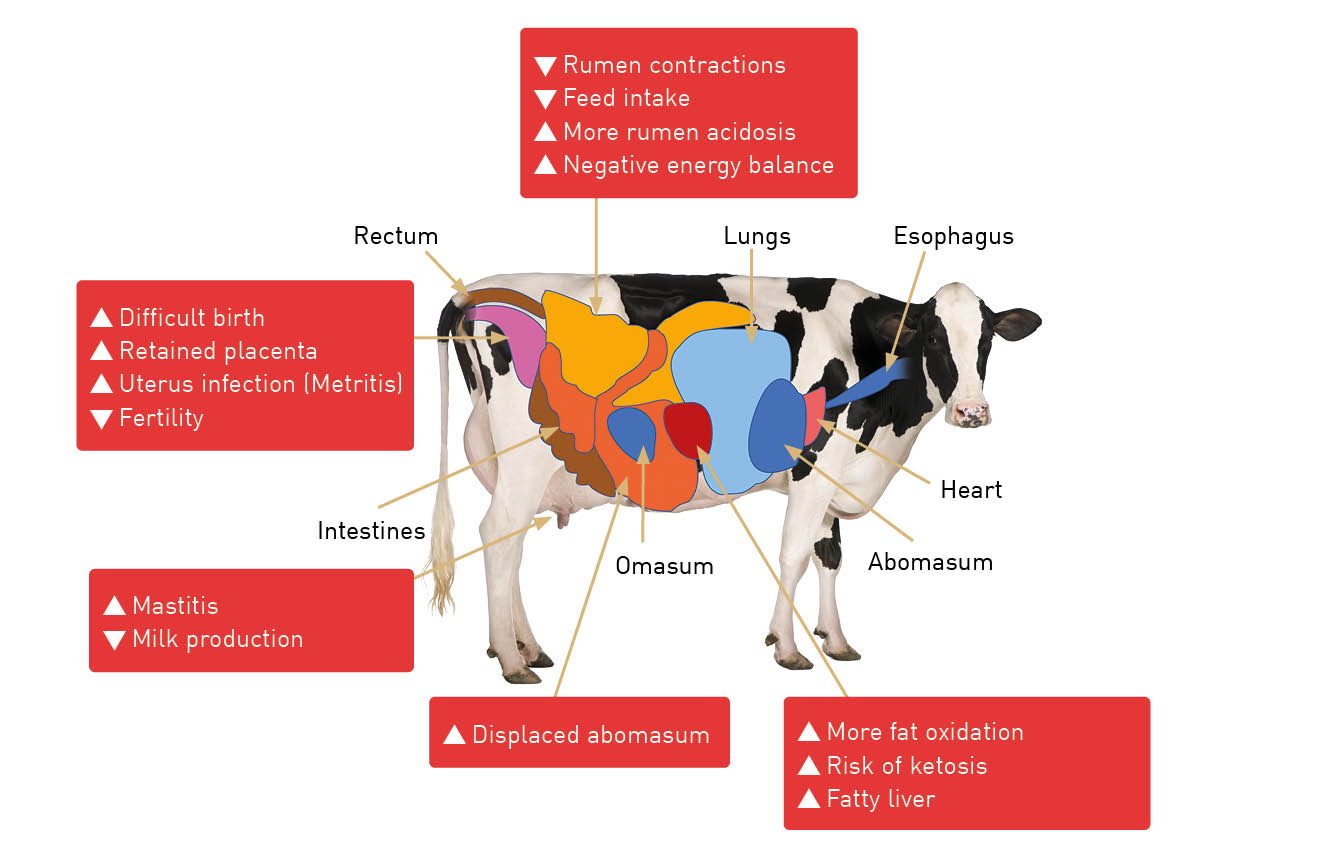Calved; Why doesn’t my cow get up?
It still happens quite often, a cow that does not get into its legs after calving. Where is this now and how can we solve it?
The phenomenon is called milk fever, and it is caused by a lack of calcium in the blood (hypocalcaemia). Milk fever occurs within 48 hours after calving, and predominantly affects older dairy cows with a high milk production1.The calcium shortage arises from the start of the milk production after calving. The calcium requirement increases sharply and suddenly! To fulfill the greater need for calcium, the cow uses her supplies in the blood. However, only 1% of the body calcium stock is in the blood. The other 99% is stored in the bones. If the ration does not contain sufficient amounts of calcium, the mobilization of calcium from the blood may increase to a hazardous level2.
Consequences of milk fever
The skeletal muscles and the muscles in other organs – like intestines, rumen and uterus – cannot function properly at deficient calcium levels. Calcium is involved in the regulation of muscle contractions. In case of calcium deficiency, the muscles are not able to contract as they should. The cow is then unable to stand up, her intestines can’t function, and rumen motility stops. These symptoms are all categorized under the clinical (visible) form of milk fever.Also, a sub-clinical form of milk fever may occur: there are no visible symptoms, but there may be processes going on in the cow’s body that might lead to problems on the long term. When the rumen motility is affected, fermentation processes may be hampered, and suboptimal uterus contractions may cause fertility problems, because of a retained placenta. Cascading effects of calcium deficiency3. (▲= increasing effect / ▼= decreasing effect)
Cascading effects of calcium deficiency3. (▲= increasing effect / ▼= decreasing effect)




